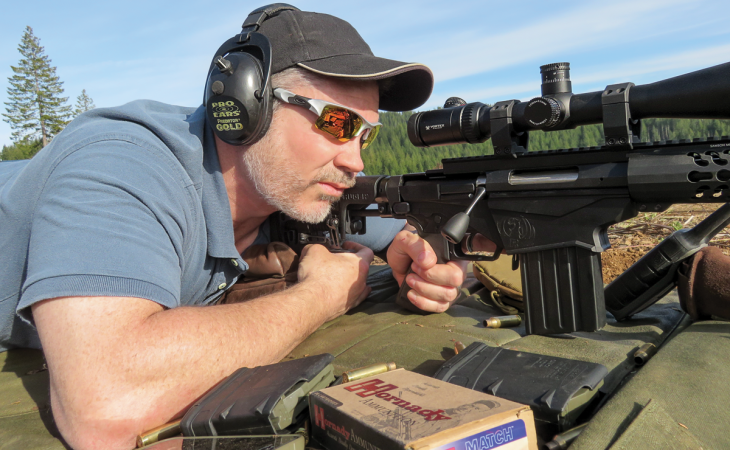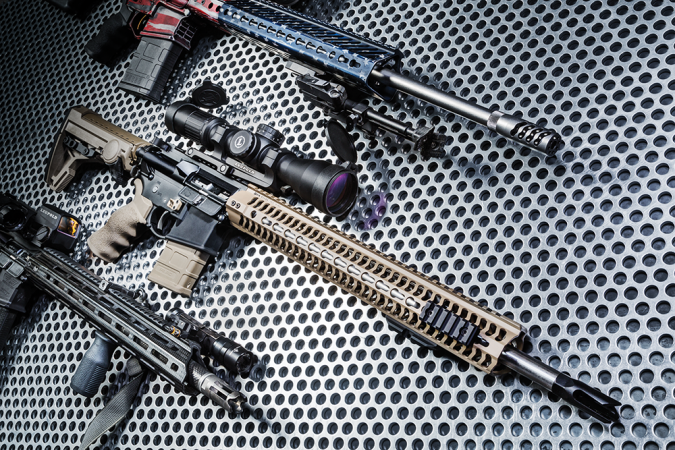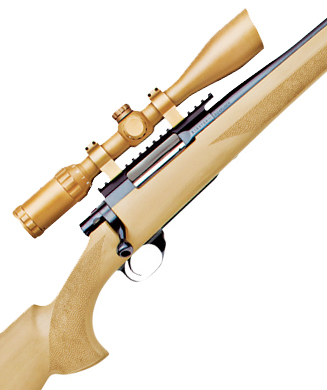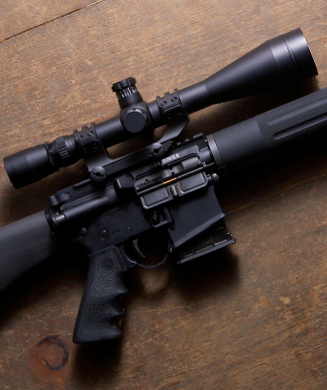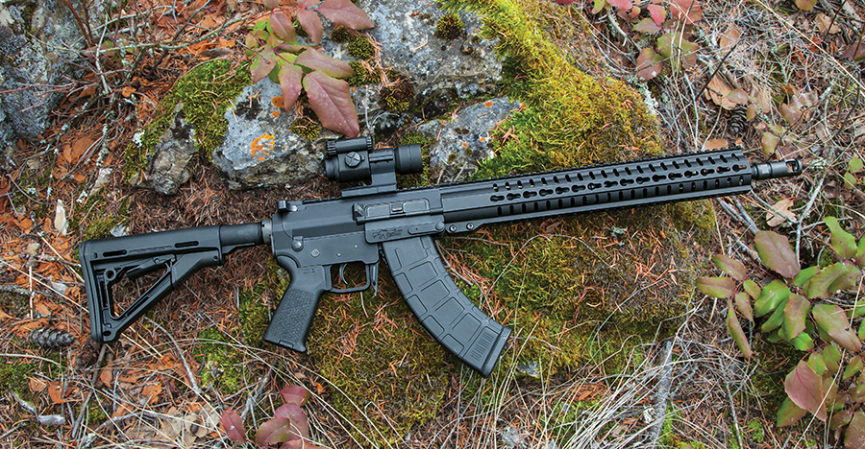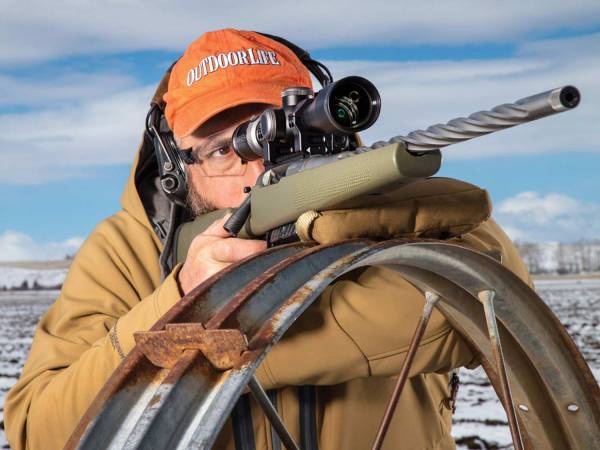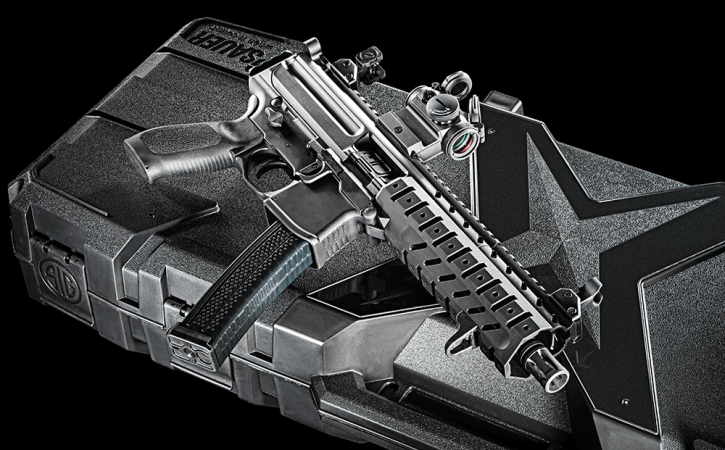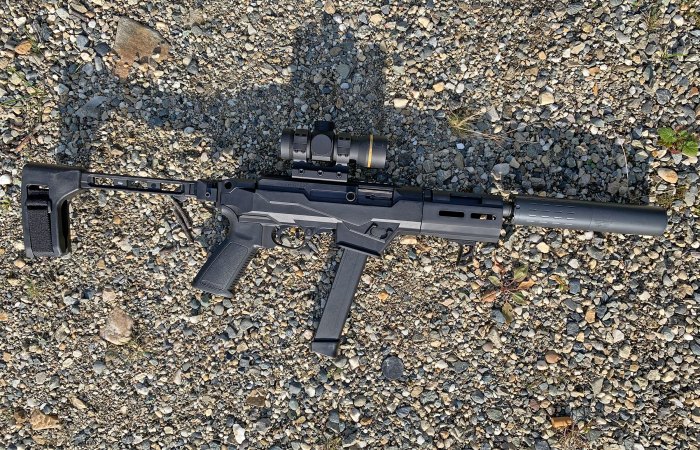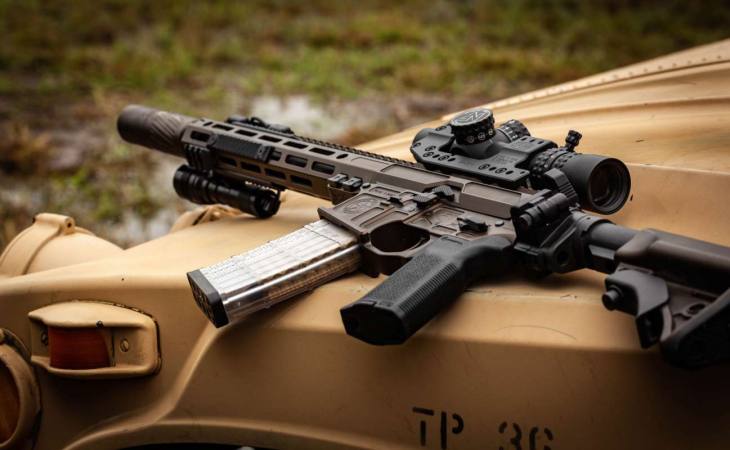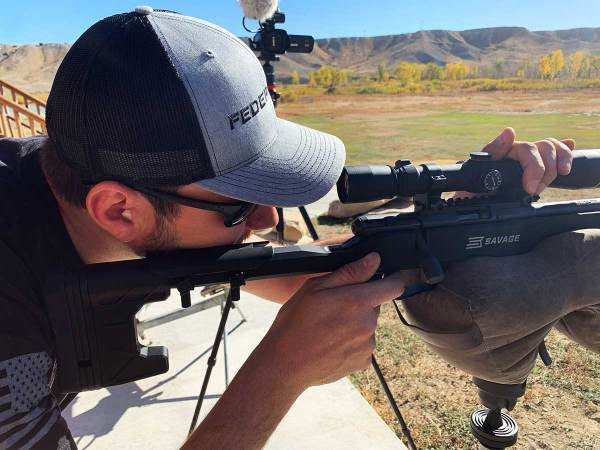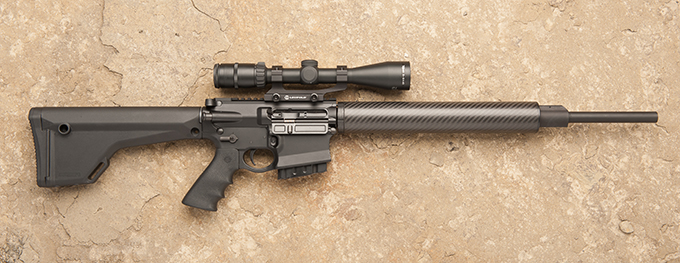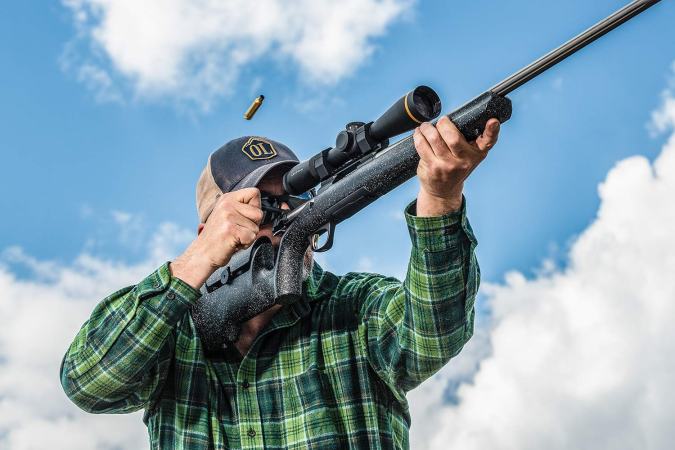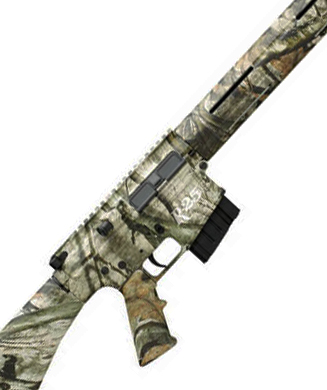We may earn revenue from the products available on this page and participate in affiliate programs. Learn More ›
Arguably, the first “precision rifles” on American soil pestered British troops armed with Brown Bess muskets. Far-reaching flintlocks, built largely by Pennsylvania gunmakers of German heritage, gave King George a memorable introduction to what would later be called the Kentucky rifle.
Then came percussion caps, metallic cartridges, smokeless powder, the Hawken plains rifle, long-range Sharps, and Remington breechloaders. The ’98 Mauser and 1903 Springfield set us on a bolt-action path to thick-barreled varminters and the current crop of tactical bolt guns. Today, you can spend lavishly on heavy rifles built to hit at four-figure yardage.
Or you can pick up a Ruger Precision Rifle. After three days on FTW’s rural Texas shooting facility, during the introduction of this rifle, smacking gongs to 1,500 yards, I am a fan.
Okay, I used an embarrassing number of rounds to hit at 1,500 yards—nearly a mile. Wind calls can be brutal at that range. But ringing pie-plate steel at 700 was routine. I managed to clean two courses that got the best of other shooters. My RPR, in 6.5 Creedmoor, was a 10 ½-pound production-line rifle with 1-in-8 rifling twist. I used Hornady 140-grain A-Max Match ammo.
Under the Hood
Impressive for its clever features as well as its accuracy, the RPR borrows from AR-style rifles and from Ruger’s hugely successful American bolt-action. Its upper receiver and one-piece bolt are CNC-machined from pre-hardened 4140 chrome-moly steel. A “lower” is made up of halves machined from 7975-T6 aluminum. The blade-style trigger can be externally adjusted down to 2 ¼ pounds with a wrench stowed in the bolt shroud.
The full-diameter bolt boasts three lugs and dual cocking cams. Its 70-degree lift helps you cycle fast under a low-mounted scope. The oversize knob is threaded and replaceable. The magazine well accepts a variety of detachable boxes, and is one of the more innovative features on the RPR. (Due to variations in their dimensions, AR10 and M14 magazines aren’t guaranteed to function.)
Headspaced with a nut, making it easy for a gunsmith to replace, the hammer-forged 24-inch barrel has a medium contour and measures .75 inch at the muzzle. Future chamberings will include the .243 Win., with a 26-inch barrel, and .308 Win., with a choice of 20- and 24-inch barrels.
Smart Ergonomics
You must handle and adjust the stock to appreciate it. The alloy handguard has an adjustable bottom rail to accept a bipod. After using a bipod, I switched to a Latigo sling. The tubular handguard is palm-friendly for this style of shooting.
The AR-style grip and buttstock bring recoil straight back. A soft-rubber butt pad babies your clavicle and doesn’t slip.
A busload of colleagues and I fired hundreds of shots through Ruger Precision Rifles at the FTW Ranch during our time there.
Tight groups at all distances were common. That you get such precision in a portable, adjustable rifle with a fine trigger for $1,299—the price of an ordinary hunting rifle—is remarkable.

1. The muzzle is threaded ⁵/₈”-24 and comes with a muzzle protector.
2. The hammer-forged barrel has 5R rifling and is free-floating.
3. The handguard has a Picatinny rail along its top and is keymod compatible. Users can easily swap to a different handguard if desired.
4. The magazine well is designed to work with multiple styles of magazines, including AICS, Magpul, DPMS, SR25, and M110. The rifle comes with two 10-round Magpul magazines.
5. The RPR has a three-lug, full-diameter bolt like that found on the Ruger American
6. The receiver is topped with a rail with 20 MOA of declination to improve scope performance at long ranges.
7. The trigger is adjustable down to 2 ¼ pounds using a wrench that is stored in the bolt shroud.
8. The safety can be placed on either side of the rifle and has an ergonomic 45-degree throw.
9. The stock folds to the side for compact storage and transport.
10. The comb adjusts for height and can be reversed.
11. This short stretch of rail can accommodate a rear monopod for additional stability.
12. The stock has flush-mounted QD cups to attach a sling.
13. The rifle has easy-to-use finger latches to make changes to the comb height and length of pull of the stock.

